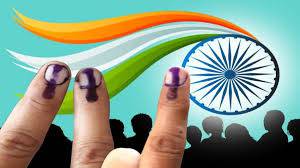"3 years of struggle, 7 days of sacrifice, the 3000-year-old Jallikattu was saved, just because all hands were united."
After his great presentation on ‘Nature and livestock in times of climate change’ at the inauguration of Kurukshetra '17 on 15th February 2017 from 5.00 pm, the correspondents of The Guindy Times got an opportunity to interact with Karthikeya Sivasenapathy.
GT: Firstly, we found your speech and presentation immensely informative. To start off with, how and when did your personal research on Gangeyam start and how did you relate that with the Jallikattu issue?
KS: Basically, I grew up as a farmer. For generations, my family has been carrying out agriculture to earn a livelihood and we have conserved and maintained several breeds of Gangeyam. But as an organisation and trust, we started functioning from 2008. I developed interest when I read a monograph published by the government of Tamil Nadu and the Department of Animal Husbandry which contained the statistical drop down of Gangeyam population. To be frank, the arena of my work and Jallikattu has no direct connection. When I once went to Madurai, I met some people working on the Jallikattu issue. Articulation and language were the only factors that had to be worked upon. They were continuously talking about typical phrases like 'Tamizhar Paarambariam' and 'Veera Vilayattu'. I told them that this was not the need of the hour, we should think about the conservation of wildlife and biodiversity in a bigger way. The Supreme Court is not interested about our cultural talk, as in, 'Veera Vilayattu', we have to bring in the UNCBD. So, I entered this issue exactly in 2012.
GT: In one of your interviews with a national newspaper, you had mentioned that the Animal Husbandry Department or the Government of India didn't completely help you or support you with this issue. Why do you think this happened?
KS: I didn't mention the Animal Husbandry Department exactly, but the Government of India integrated a cattle development program ICDP. Till 1970s, it was called the Native Livestock Program and after 1970s, it was changed to ICDP, where they went for milk breeds from Europe. In general, we are often interested in foreign products. The same thing happened with the Indian Government in the choice of breeds and now we are facing the consequences.
GT: One question which I always wanted to ask is about Artificial Breeding. I have heard that one cow can yield 50 litres of milk per day by this process. Is this nature's invention or a company product? How could this be possible? Is this completely because of international intervention or India also has a part in it?
KS: Breeds of cattle meant for over-production of milk are basically because of private corporate intervention in Europe and America. It's not our culture to go into a production-oriented system. We have a tradition in India and we also have a deep connect with natural livestock. When there is so much of production, it also requires huge input, which is not necessary for a nation like ours.
GT: I saw your talk on Neeya Naana. You had mentioned that you researched a lot on similar issues on a national level like in Spain, South Africa etc. How was the response and welcome on that ground?
KS: The basic reason for the ban on Jallikattu and other related issues abroad was because of few organisations like Thermal Welfare Board of India, Blue Cross of India, PETA, CUPA and so on. These organizations are externally funded for different purposes to ensure that the native livestock is lost. India has 42 breeds of cattle, they directly targeted 13 breeds of cattle in 2011. But now, the act has been amended for Tamil Nadu and Karnataka. For a worldwide change and success at the protest ground, shows like Neeya Naana and Aadhi's Takkaru Takkaru played a major role.
GT: In another interview of yours, I saw you mentioning that villagers are ready to maintain a bullock, but are unable to main cattle. In regard to farming, there is organic and terrace farming happening in and around the city. In this way urbanisation is helping us improve our farming techniques with the help of new innovations. Do you think urban people can do something for the betterment of the preservation of native livestock?
KS: Of course, yes. Nowadays a lot of people live in enclosures with 50-100 houses in a single place. In places like that, people can join and allot 25-50 cents and preserve the growth of 10-20 breeds of cattle suited to their place. They can use that milk for household purposes. They can also use the cow dung for terrace farming. I know many people doing terrace farming with lots of vegetables and crops except paddy like in films like 36 Vayathinile. We can do this in cities. We are even ready to train the interested people for the same.
GT: Is our victory after the Marina Protest a complete and sustained victory?
KS: As per Indian Law, Yes. We have achieved what we demanded. We demanded the amendment of PCA through Act of Government of Tamil Nadu or Act of Parliament. We got the former. So it is a success. But we should also understand that any law in India - be it Legislature or Parliament, is under the preview of the honorable Supreme Court. It's there in the court now and we'll have to fight it out. In fact, our organisation is also into it. So, we will be continuously fighting for it.
GT: Finally, I would like to let you know that we do organic farming within our college. We supply those goods for our University mess. Do you have any good thoughts on the same?
KS: It is actually a great initiative. I am really proud that students of Engineering College are doing Organic Farming. I met those lovely youngsters now. I also promised to donate to them a Gangeyam bull calf. As soon as I make arrangements for transport, the bull calf will arrive. I am looking forward to seeing it roam around the CEG campus!





